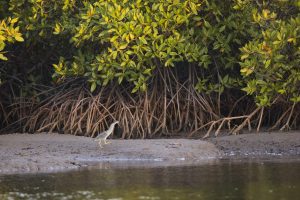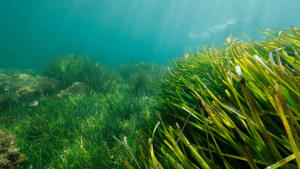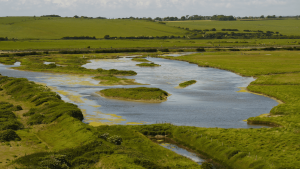Image credit: ©NVanIngen | WeForest
On this #WorldMangroveDay we’re talking all things Blue carbon! Specifically blue carbon ecosystems, that are some of the world’s most efficient carbon sinks. Carbon sinks are anything that absorbs more carbon from the atmosphere than it releases, making blue carbon key in the fight against climate change.
Blue carbon is the carbon captured and stored in coastal and marine ecosystems. These ecosystems mainly include mangroves, seagrass meadows and salt marshes.
Unfortunately, blue carbon ecosystems are some of the most threatened on Earth, with an estimated 340,000 to 980,000 hectares lost each year. This is largely due to climate change as well as human activities, including aquaculture, agriculture, pollution, and urban coastal development.
Even though they are much smaller in size than Earth’s forests, blue carbon ecosystems can sequester carbon at a much higher rate. If left intact, they can also keep carbon stored for thousands of years!
Some of the world’s most effective carbon sinks are mangroves, seagrass meadows and salt marshes!
MANGROVES

Mangroves are trees or shrubs that are found along coastlines in the tropics and subtropics. Nicknamed the ‘forest of the sea’ they are critical carbon sinks and provide effective coastal protection from storm waves.
Despite their importance, mangroves are disappearing at a global loss rate of 1–2% per year. In the last 50 years, between 30–50% of mangroves have been lost. Climate change and human activities, such as urban development, aquaculture and mining, represent major threats to mangrove habitats.
SEAGRASS MEADOWS

Despite its name, seagrass is not actually ‘grass’ – it’s an aquatic flowering plant with deep roots, found along the shore of every continent except Antarctica.
Although seagrass covers less than 0.25% of the ocean floor, they store about 10% of the carbon buried in ocean beds each year. Per hectare, seagrasses can store up to twice as much carbon as terrestrial forests!
An estimated 7% of seagrass habitat is being lost worldwide each year. The main threats include urban, industrial, and agricultural run-off, coastal development, dredging, unregulated fishing, and climate change.
SALT MARSHES

Salt marshes are coastal wetlands that are regularly flooded and drained by tides. They are boggy and marshy because the soil is composed of mud and peat, which is made of decaying plant matter.
Salt marshes provide shelter, food and nursery grounds for more than 75% of fisheries species. They also protect shorelines from erosion by creating a buffer against waves and trapping soils.
They’re efficient carbon sinks, accumulating organic carbon in their soils up to 55 times faster than tropical rainforests!
Sadly, salt marshes are disappearing due to climate change and human activities. Since the turn of the century, an area of salt marsh twice the size of Singapore has been lost.
WHY SHOULD WE PROTECT THESE ECOSYSTEMS?
Blue carbon ecosystems provide many benefits and services that are essential for climate change adaptation, including protection from storms and rises in sea levels, prevention of shoreline erosion, improved water quality, and food and livelihood security for coastal communities.
Additionally, these ecosystems store significant amounts of carbon. By removing carbon from the atmosphere, blue carbon ecosystems play a key role in mitigating climate change.
